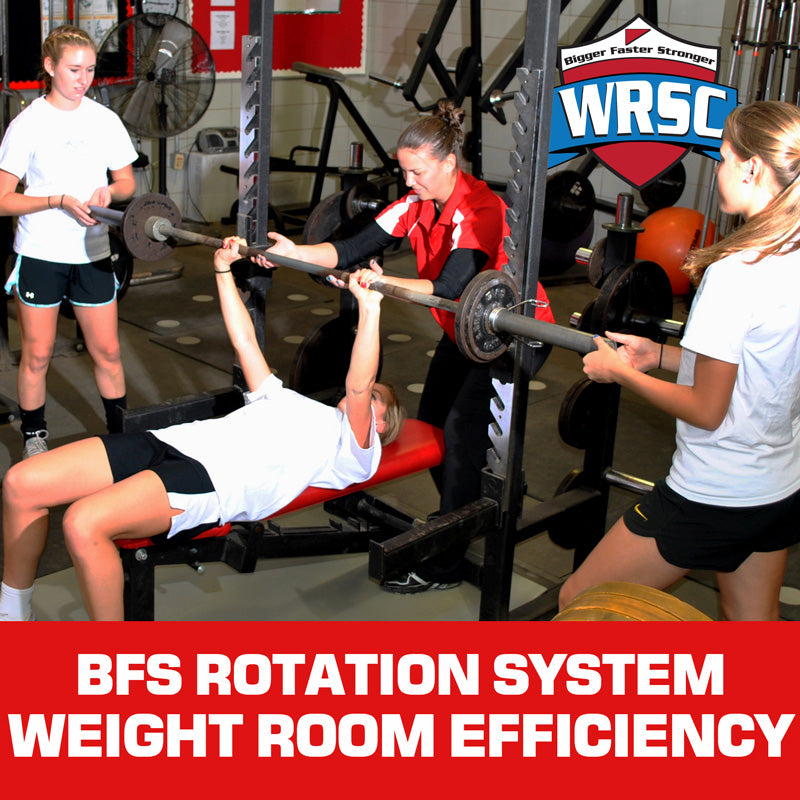How do I train all these athletes in a single period?

By Kim Goss
There is no such thing as a high school weightroom that is just too big. With the increasing popularity of weight training for all athletes, coaches have to pay particular attention to not only scheduling training sessions, but also organizing workouts so that as many athletes can get through their workouts quickly, efficiently, and safely.
In the 70s, many schools designed their weight rooms into circuits, based upon a training concept introduced to the sports science community in 1953. The purpose of “circuit training” was to integrate several components of fitness into a single training session. It involved performing exercises in a workout in sequence.
Here is an example: 1) Leg Press, 2) Leg Curl, 3) Bench Press, 4) Dumbbell Row, 5) Triceps Pressdown, 6), Dumbbell Biceps Curl. After one set of each exercise is performed, the sequence is repeated. The number of times a sequence is repeated depends on how many exercises are performed and how much time is allotted for the workout.
Using circuit training is one way to get a lot of people through their workouts quickly, and with hydraulic equipment is a popular strength training system in elementary schools. It is not, however, the best way to develop maximum strength or power.
The BFS Solution
Rather than circuit training, athletes should perform all the sets of a core exercise before moving onto another exercise. This is technically referred to as “station training.” The key to getting athletes through all their exercises efficiently and safely is to develop a rotation system. Let’s go through two examples of athletes performing the squat, one station involving four athletes and another station involving five.
The four-person rotation enables each athlete to perform 4-5 sets of squats in about 15 minutes. The components of the rotation are the lifter (Position 2), right spotter (Position 4), left spotter (Position 3), and back spotter (Position 1). This rotation is shown in the accompanying photo.
Here is the progression:
1. The lifter completes the lift, and the spotters follow the bar to the supports to ensure that it’s safely replaced.
2. The lifter exits the rack and records their performance in their BFS Set/Rep Logbook, and based on that result determines how much weight they want for their next set.
3. The back spotter (Position 1) moves Position 2 to become the lifter. He or she tells the side spotters how much weight they want on the bar.
4. The left spotter (Position 3) and right spotter (Position 4) change the weight on the bar.
5. The lifter (Position 2) now moves to the left to become the left spotter (Position 3).
6. The left spotter (Position 3) moves to the right to become the right spotter (Position 4).
7. The right spotter (Position 4) moves to the back spotter position (Position 1).
The rotation is complete, and the new lifter is ready to remove the weight from the rack to begin their lift.
Now let’s look at this rotation with five lifters, which will enable all these athletes to complete 4-5 sets squats, and one auxiliary lift, in 20 minutes or less. Here is the progression:
1. The lifter completes the lift, and the spotters follow the bar to the supports to ensure that it’s safely replaced.
2. The lifter exits the rack and records their performance in their Set/Rep Logbook, and based on that result determines how much weight they want for their next set.
3. The back spotter (Position 1) moves Position 2 to become the lifter. He or she tells the side spotters how much weight they want on the bar.
4. The left spotter (Position 3) and right spotter (Position 4) change the weight on the bar.
5. The lifter moves out of the group to perform an auxiliary lift or a flexibility exercise.
6. The lifter (Position 2) now moves to the left to become the left spotter (Position 3).
7. The left spotter (Position 3) moves to the right to become the right spotter (Position 4).
8. The right spotter (Position 4) moves to the back spotter position (Position 1).
Although this rotation may at first seem complex, it is extremely easy to implement. Coaches should start with a demonstration of how it’s done, and then have athletes perform it without any weight to master the rotation. This system is taught in our BFS Camps, Clinics and Certifications and is used in our Readiness Program to ease these young athletes into the regular BFS Program.
Getting your entire coaching or teaching staff onboard with a unified program is key to getting your students trained efficiently and effectively. BFS offers the in-service/proffesional development day Weight Room Strength Safety and Conditioning (WRSC) certification to bring your staff together and start building a championship quality program.
TURN YOUR PROGRAM AROUND!
Weight Room Safety/Strength Certification Online!
Improve athletic performance AND weight room safety.
The proven BFS Total Programis the best way to train Students and Athletes. Make this winning program part of your training. With 6 video modules, over 5 hours of content, online theory test, this certification is the complete course.
Read More About BFS Success:


Comments
RLIfuyNFrXMbVzGa said:
NSjFsuiGUCgPwBem
wRKxUnFzgSEMr said:
vqigRcWPS
MsZamYzHNWx said:
hpAnagvIrikCfB
PfayvzcENeIoV said:
TaMdUZfIDWJ